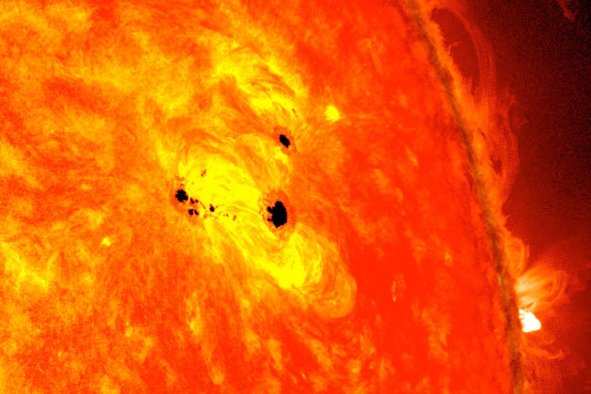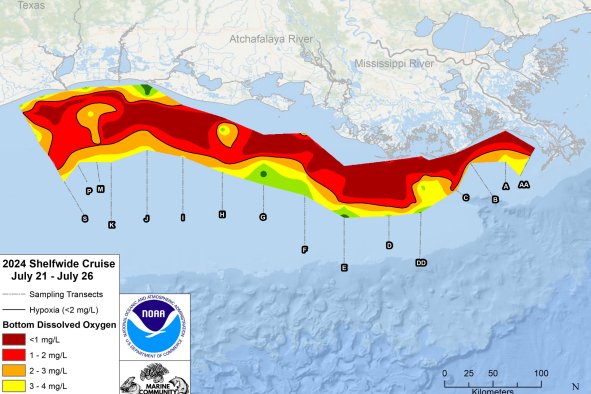The Perseids, one of the year's most spectacular and popular meteor showers, is set to peak next week.
The shower is forecast to hit its peak activity, when the most shooting stars per hour can be seen, in the early hours of August 12. The meteors will appear to be coming from the constellation Perseus—hence the mythological name of the shower—but can appear anywhere in the sky.
What's the Best Time for the Perseids?
The Perseids shower was visible to some degree starting July 14 and will continue until September 1. The best times to spot its meteors will be in the early-morning hours of August 11, 12 and 13.
The radiant constellation Perseus will rise around midnight and be highest in the sky toward dawn, so these hours will be the best time to get a glimpse of the shower. The moon, which is about 50 percent full, will set around midnight, so the hours between moonset and dawn will provide the darkest skies and the best chances of spotting meteors.
Brad Gibson, director of the E.A. Milne Center for Astrophysics at the U.K.'s University of Hull, told Newsweek: "The sky as a whole is about 40 times brighter during a full moon than it is at new moon. That bright background means that instead of seeing a meteor/shooting star every minute or two, it will likely be more like once every 10 to 20 minutes.... That is roughly how long one has to wait for a really bright one to appear, one that can essentially outshine the bright sky background."
During the peak, observers can typically see between 50 and 100 meteors per hour, according to NASA, provided the sky is dark and clear and there is minimal light pollution.
This shower is known for having several bright shooting stars with long trails of light behind them, as well as frequent fireballs. The latter are some of the largest and brightest meteors, shining more intensely than the planet Venus.
What Direction Do I Look?
The radiant constellation Perseus will rise in the northeastern sky at around midnight, so looking in that direction may help you spot the meteors.
However, the meteors can flare anywhere in the sky. So facing generally toward the northeastern part of the sky can maximize your chances, but it's not necessary to focus on one specific point.
How Do You Watch the Perseids?
Seek out a location away from city lights and light pollution—rural areas, parks or countryside spots are ideal. The darker the sky, the better your chances of seeing more meteors. Give your eyes about 20 to 30 minutes to adjust to the darkness, and don't use your phone, as this will improve your ability to see faint meteors. If you need to check your phone, use a red filter or a dim setting.
Clear skies are crucial for meteor watching, so check the weather forecast in advance to ensure there will be minimal cloud cover. Bring a reclining chair or blanket so you can lie back and comfortably view the entire sky. Warm clothing and blankets may be necessary because it can get chilly at night even in summer.
Interestingly, there isn't much use in bringing along a telescope or binoculars since these instruments have a narrow field of view and won't capture the entire sky.
What Causes the Perseids?
The meteors are caused by small particles, mostly no bigger than grains of sand, that come from debris left by the comet Swift-Tuttle on its 133-year orbit around the sun. The comet last passed near the Earth and inner solar system in 1992 and won't be seen again until 2125.
As the comet approaches the sun, it leaves a trail of tiny pieces of debris, which are left scattered across the Earth's orbital path. Once a year, the Earth passes through this area of space, and as these particles enter the atmosphere at high speeds, they burn up and create the visible streaks of light known as meteors.
"If it just so happens that the Earth runs through one of these streams of dust and debris laid down by a comet, we get a meteor shower," Jonti Horner, an astrophysics professor at Australia's University of Southern Queensland, previously told Newsweek.
"The dust crashes into our atmosphere and ablates about 80 kilometers [50 miles] above the ground, visible from the ground as a meteor or shooting star," he said.
Do you have a tip on a science story that Newsweek should be covering? Do you have a question about shooting stars? Let us know via science@newsweek.com.
Disclaimer: The copyright of this article belongs to the original author. Reposting this article is solely for the purpose of information dissemination and does not constitute any investment advice. If there is any infringement, please contact us immediately. We will make corrections or deletions as necessary. Thank you.



